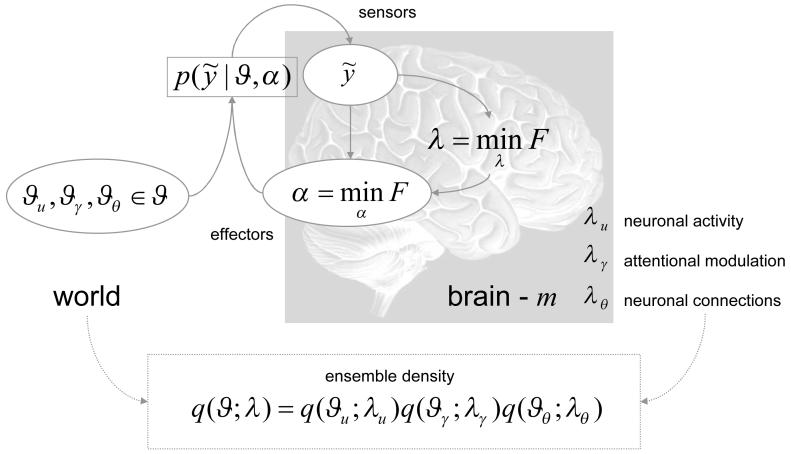Figure 2.
Schematic detailing the quantities that define the free-energy. These quantities refer to the internal configuration of the brain and quantities that determine how a system is influenced by the environment. This influence is encoded by the variables that could correspond to sensory input or any other changes in the system state due to external environmental forces or fields. The parameters α correspond to physical states of the system that change the way the external forces act upon it or, more simply, change the way the environment is sampled. A simple example of these would be the state of ocular motor systems controlling the direction of eye gaze. is the conditional probability of sensory input given its causes, , and the state of effectors (i.e., action). is called an ensemble density and is encoded by the system’s parameters, λ. These parameters (e.g., mean or expectation) change to minimise free-energy, F and, in so doing, make the ensemble density an approximate conditional density on the causes of sensory input.

